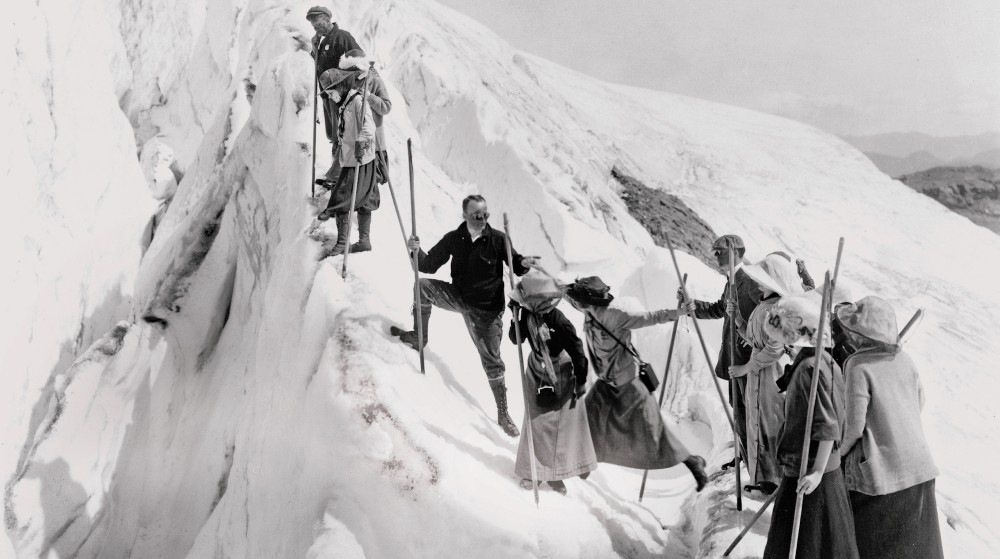Over the years I’ve hiked into lush valleys and among the hills of our Pacific Northwest. To undertake these adventures, I usually fired up an internal combustion engine mounted on four wheels and two axles and drove to the end of a road, often a paved road. From that point these tame meanderings usually lead into a well-marked trailhead.
In an earlier day, the trip to the trailhead was itself an adventure. Voyageurs, missionaries, mountain men, and intrepid explorers hacked and bushwacked their way through dense forests to “reach the other side.”
When U.S. Army Lt. Joseph P. O’Neil was dispatched to probe the Olympic Mountains in 1885, his party took a steamer from Port Townsend to Port Angeles, then cleared a path “stumbling through underbrush, cutting and clearing logs . . . averaging perhaps a mile in an hour and a half.”
In 1889, old-time woodsman James Christie led the Press Expedition (sponsored by the Seattle newspaper, the Seattle Press) across the Olympic Mountains by navigating the Elwha River for 30 miles in a hand-built barge called “Gertie.” After that stretch, Christie’s team literally dragged old Gertie for 10 miles, foot by foot, over shallows, boulders, fallen trees, and treacherous currents. Abandoning the faithful scow, the party staggered through waist-high snow. One of the fully loaded pack mules went over a precipice to a violent death.
One poet of the outdoors, Kenneth Rexroth, as a raw-boned youth carried a large backpack through the Northern Cascades, alone and without the assurance of a trail. He never forgot the experience and described details of his lonely experience.
Older editions of Mountaineers Magazine include other treks-to-a trailhead challenges. For example, Club outings often began by climbing into baggage cars, boarding city street cars leaving Seattle for the edge of town, taking steamers to remote Puget Sound beaches, and clinging to stagecoaches. The Club would send scouts ahead to blaze a trail, then returning to base camp to lead the larger, more tender party along a new path.
During a 1911 Mountaineers summer outing the party travelled 48 miles from Mt. Rainier to the Columbia River in the following manner: 266 miles by railroad; 55 by boat; 162 on foot. The walking lap was broken as follows: 33 miles over wagon roads; 76 along what were described as “good trails”; 53 miles on “poor or no trail.”
The locations of early recreational trails were influenced by railroads as steel ribbons got travelers to remote jumping off points. Beginning about 1915 automobile roadways were incorporated into hiking adventures. One of the first such roads was a gravel path over Snoqualmie Pass, useable summers only.
If amateur outdoor adventurers get the itch, they can find a dependable roadmap – which still exist – and plat a route that offers fresh air, exercise, and a dollop of Northwest history.
Discover more from Post Alley
Subscribe to get the latest posts sent to your email.

I had a taste of that experience recently. A friend wanted to go up to Lime Ridge in Glacier Peak Wilderness, which is above the Suiattle River. Problem was the bridge over the river washed out years ago. We had to cross the river on a log, fight through brush and Devil’s Club, climb over and under countless logs. Took us 2 hours to go less than a mile–which is where the old trail began. We struggled for another couple of hours before giving up well below the ridge. Gives one a real appreciation for the early explorers. Of course, I do question the wisdom of the Press Expedition trying to cross the Olympics in the winter.